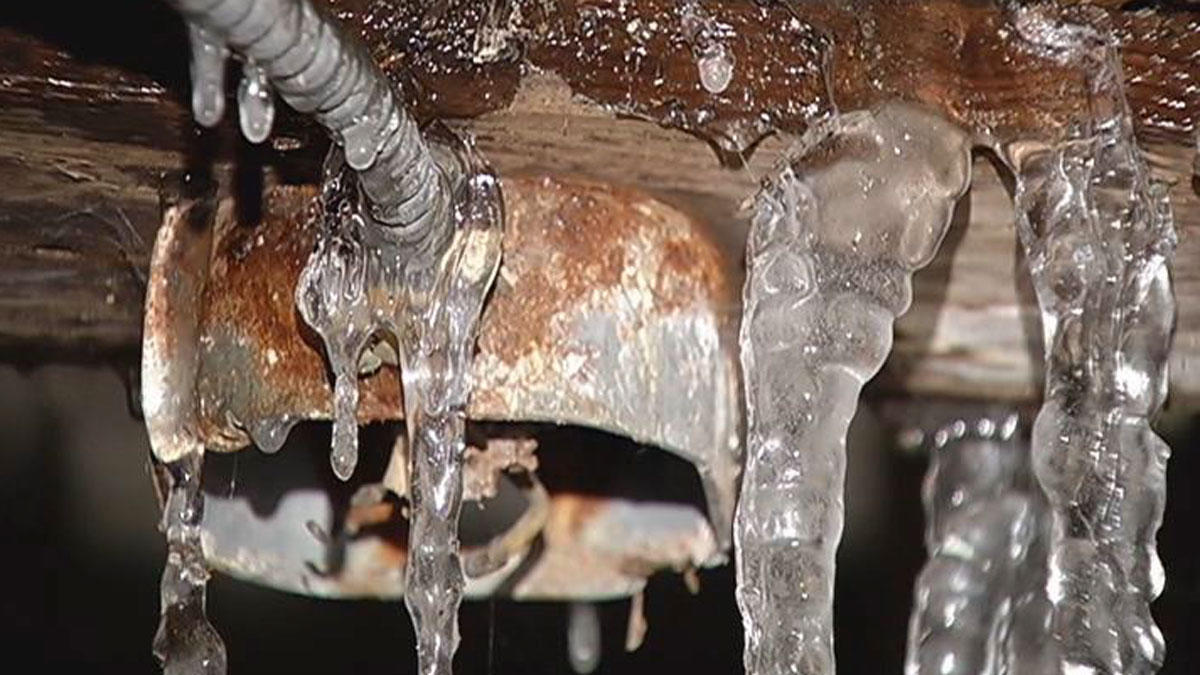Protecting Against Frozen Plumbing in Winter: Professional Advice
Protecting Against Frozen Plumbing in Winter: Professional Advice
Blog Article
How do you feel with regards to How To Avoid Freezing Pipes?

Winter can ruin your pipes, specifically by freezing pipelines. Right here's exactly how to prevent it from happening and what to do if it does.
Introduction
As temperatures drop, the threat of icy pipes rises, possibly causing expensive repairs and water damages. Comprehending exactly how to stop icy pipes is critical for house owners in cold environments.
Prevention Tips
Shielding vulnerable pipelines
Cover pipelines in insulation sleeves or utilize heat tape to secure them from freezing temperature levels. Focus on pipelines in unheated or external areas of the home.
Home heating techniques
Keep indoor rooms effectively warmed, particularly areas with plumbing. Open up cupboard doors to allow warm air to flow around pipelines under sinks.
Just how to identify icy pipelines
Try to find reduced water circulation from faucets, uncommon smells or noises from pipelines, and noticeable frost on exposed pipelines.
Long-Term Solutions
Structural modifications
Consider rerouting pipes far from outside wall surfaces or unheated locations. Add extra insulation to attics, cellars, and crawl spaces.
Updating insulation
Purchase high-grade insulation for pipes, attic rooms, and wall surfaces. Proper insulation helps keep constant temperatures and lowers the danger of frozen pipelines.
Safeguarding Outside Plumbing
Yard hoses and exterior faucets
Separate and drain yard hose pipes prior to winter season. Mount frost-proof faucets or cover outdoor faucets with shielded caps.
Understanding Icy Pipes
What triggers pipelines to ice up?
Pipes freeze when revealed to temperatures below 32 ° F (0 ° C) for prolonged durations. As water inside the pipelines freezes, it broadens, taxing the pipeline wall surfaces and potentially creating them to rupture.
Risks and problems
Frozen pipelines can lead to water system disruptions, property damages, and pricey repair work. Ruptured pipes can flooding homes and cause considerable architectural damages.
Signs of Frozen Water Lines
Identifying icy pipes early can avoid them from breaking.
What to Do If Your Pipelines Freeze
Immediate activities to take
If you think icy pipelines, maintain faucets open to alleviate stress as the ice thaws. Use a hairdryer or towels soaked in warm water to thaw pipelines gradually.
Conclusion
Stopping icy pipelines needs aggressive procedures and fast reactions. By recognizing the reasons, signs, and safety nets, homeowners can safeguard their pipes throughout cold weather.
6 Proven Ways to Prevent Frozen Pipes and Protect Your Home
Disconnect and Drain Garden Hoses
Before winter arrives, start by disconnecting your garden hoses and draining any remaining water. Close the shut-off valves that supply outdoor hose bibs and leave the outdoor faucet open to allow any residual water to drain. For extra protection, consider using faucet covers throughout the colder months. It’s also important to drain water from any sprinkler supply lines following the manufacturer’s directions.
Insulate Exposed Pipes
Insulating your pipes is an effective way to prevent freezing. Pipe insulation is readily available at home improvement stores and is relatively inexpensive. Pay close attention to pipes in unheated areas such as the attic, basement, crawl spaces, or garage. Apply foam insulation generously to create a buffer against the cold. You can also wrap your pipes in heat tape or thermostat-controlled heat cables for added warmth.
Seal Air Leaks
Inspect your home for any cracks or openings that could let in cold air. Seal any holes around the piping in interior or exterior walls, as well as the sill plates where your home rests on its foundation. Additionally, make sure to keep your garage door closed unless you’re entering or exiting. Leaving it open creates a significant air leak that can lead to frozen pipes.
Allow Warm Air Circulation
During cold snaps, it’s essential to allow warm air to circulate evenly throughout your home. Leave interior doors ajar to promote better airflow. Open kitchen and bathroom cabinets to help distribute heat consistently around the rooms. If you have small children or pets, be sure to remove any household chemicals or potentially harmful cleaners from open cabinets for safety.
Let Faucets Drip
A small trickle of water can make a big difference in preventing ice formation inside your pipes. When temperatures drop significantly, start a drip of water from all faucets served by exposed pipes. This continuous flow helps prevent the water from freezing. Additionally, running a few faucets slightly can relieve pressure inside the pipes, reducing the chances of a rupture if the water inside does freeze.
https://choateshvac.com/6-proven-ways-to-prevent-frozen-pipes-and-protect-your-home/
:strip_icc()/snow-outdoor-faucet-pipes-4af65d1e5e904fb1aa7bf74071fe5d89.jpg)
Do you really like reading about Helpful Tips to Prevent Frozen Pipes this Winter? Put a remark directly below. We'd be glad to hear your insights about this article. We hope that you visit us again in the near future. In case you enjoyed reading our blog posting plz make sure you remember to pass it around. Thanks so much for your time invested reading it.
Click Here Report this page